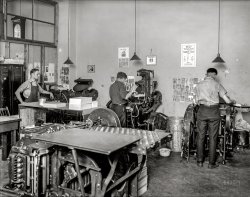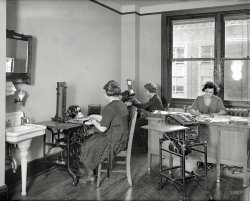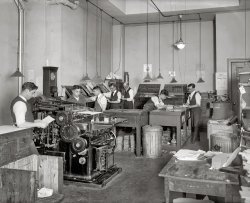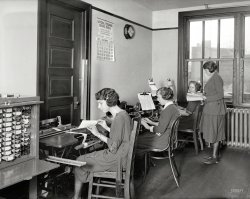
MAY CONTAIN NUTS

Search Shorpy
SHORPY ART

Framed or unframed, desk size to sofa size, printed by us in Arizona and Alabama since 2007. Explore now.
Join and Share
Ad-Free Shorpy
Shorpy is funded by you. Patreon contributors get an ad-free experience.
Learn more.

Recent comments
- Freeze Frame
- Texas Flyer wanted
- Just a Year Too Soon
- WWII -- Replacing men with women at the railroad crossing.
- Yes, Icing
- You kids drive me nuts!
- NOT An Easy Job
- I wonder
- Just add window boxes
- Icing Platform?
- Indiana Harbor Belt abides
- Freezing haze
- Corrections (for those who care)
- C&NW at Nelson
- Fallen Flags
- A dangerous job made worse
- Water Stop
- Passenger trains have right of way over freights?
- Coal
- Never ceases to amaze me.
- Still chuggin' (in model form)
- Great shot
- Westerly Breeze
- For the men, a trapeze
- Tickled
- Sense of loneliness ...
- 2 cents
- Charm City
- What an Outrage
- Brighton Park
Member Photos
The Shorpy
Print Emporium
Print Emporium
Search Shorpy
Search results -- 30 results per page
- Print Shop: 1922
- January 1922. Washington, D.C. "Machinists' Association -- printers." Activities relating to the International Association of Machinists . National Photo Co. glass negative. View full size.
Before WordPerfect or even Atari Writer ... ... Posted by Dave - 12/29/2021 - 4:51pm -

- Modern Office: 1921
- December 1921. Washington, D.C. "Machinists Association." Mad amenities in this office paradise include windows ... Posted by Dave - 08/02/2013 - 7:06pm -

- Podmates: 1921
- December 1921. Washington, D.C. "Machinists Association." One of a six-photo set. National Photo Company ... This one is probably the entire office staff of the "Machinists Association" or the annual convention in Ashtabula.
Rrrring ... Posted by Dave - 09/13/2011 - 7:59pm -
![Podmates: 1921 December 1921. Washington, D.C. "Machinists Association." One of a six-photo set. National Photo Company Collection glass negative. View full size.
Those were the dayswhen people used a pencil with an eraser on the end!
Hanging UPThe pantograph-mounted phone is a real nifty touch.
Device Behind the TypewriterDoes anybody know what that device is behind the typewriter -- the vertical panel that looks like it probably held paper in place. There was one featured in another recent Shorpy photo and it looks much more elaborate than a simple paper holder.
I'm dying to know what it is!!!
[It's a Remington-Rand "Line-a-Time" copy holder. The lever advances the copy up one line each time it's pressed. - Dave]
For the GoldIdentify the photo on the wall on the left.
Politically CorrectNo girly calendars here.
ErgonomicsPlenty of innovative ideas for arranging a small space. Everything "falls easily to hand" when needed and stays out of the way when not needed. Note especially the double-hung shades: no need to open the shade before opening the window!
To the bitter endPencil with eraser: I still use them,when the occasion arise.
Who's got the button?Did the ladies of the '20s miss the long rows of buttons they no longer needed to fasten up, now that high-top shoes and high-collared shirtwaists were out of style? Could that explain the fad for sewing random rows of extra buttons on their clothing that we've seen on more than one Shorpy business woman of the day? Perhaps a law of fashion nature - the button can neither be created nor destroyed, only moved to a new location.
Photo IDPanoramic group shots like the one on the left wall are something of an antique store staple. This one is probably the entire office staff of the "Machinists Association" or the annual convention in Ashtabula.
RrrringLove their modern wall phone!
(The Gallery, D.C., Natl Photo, The Office)](https://www.shorpy.com/files/images/30128u.thumbnail.jpg)
- Union Shop: 1922
- January 1922. Washington, D.C. "Machinists' Association, printers." Another peek behind the scenes at the International Association of Machinists. View full size.
I like exposed moving parts. Probably why I don't have a lot of sympathy ... Posted by Dave - 09/13/2011 - 8:03pm -

- Office Girls: 1921
- December 1921. Washington, D.C. "Machinists Association." And what could be an exhibit for the Museum of Antique ... Posted by Dave - 07/30/2013 - 9:25am -
























